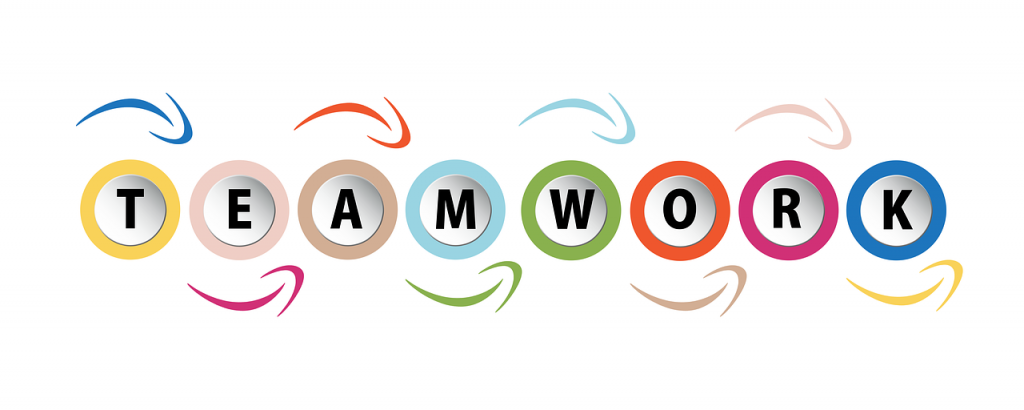Inquire
Team Leadership and Its Responsibilities & Teamwork Benefits

Title: Team Leadership and Its Responsibilities
Introduction:
Team leadership is a crucial aspect of modern organizations, where groups of individuals with diverse skills and expertise come together to achieve common goals. A skilled team leader plays a pivotal role in guiding, motivating, and coordinating team members to maximize their potential and enhance overall productivity. In this article, we will explore the concept of team leadership and delve into the responsibilities that an effective team leader should embrace.
Understanding Team Leadership:
Team leadership refers to the ability to guide and influence a group of individuals towards the accomplishment of a shared vision. It involves fostering a positive and collaborative work environment that encourages open communication, trust, and respect among team members. A successful team leader recognizes the unique strengths and weaknesses of each team member and leverages them to achieve optimal results.
Key Responsibilities of a Team Leader:
1.Goal Setting and Vision:
One of the primary responsibilities of a team leader is to establish clear and achievable goals for the team. They should also articulate a compelling vision that aligns with the organization's objectives. A well-defined vision provides direction and purpose, motivating team members to work collectively towards a common aspiration.
2.Effective Communication:
Communication lies at the heart of successful team leadership. A team leader must be an active and empathetic listener while also ensuring that information flows smoothly among team members. Clear and transparent communication prevents misunderstandings, boosts morale, and helps resolve conflicts swiftly.
3.Building and Nurturing the Team:
A team leader is responsible for assembling a cohesive and complementary group of individuals. They should identify talent, delegate tasks based on individual strengths, and encourage teamwork. Additionally, a team leader should foster a culture of continuous learning and provide opportunities for skill development to enhance team members' capabilities.
4.Motivation and Empowerment:
Motivating the team is an essential aspect of effective leadership. A team leader should recognize and acknowledge the efforts of team members, providing constructive feedback and encouragement. Empowering team members by entrusting them with responsibilities boosts their confidence and fosters a sense of ownership and dedication.
5.Conflict Resolution:
In any team, conflicts are inevitable. A skilled team leader acts as a mediator during conflicts and disputes, promoting a healthy resolution. By addressing issues promptly and fairly, the team leader ensures that interpersonal tensions do not impede progress.
6.Performance Management:
Team leaders are responsible for monitoring and evaluating the performance of team members regularly. They should provide feedback on individual and collective achievements, identify areas for improvement, and implement strategies to enhance overall performance.
7.Decision Making:
Effective team leaders must possess good judgment and decision-making skills. They should be able to analyze situations objectively, consider various perspectives, and make informed decisions that benefit the team and align with the organizational goals.
Teamwork offers numerous benefits that contribute to the success and growth of individuals, organizations, and projects.
Here are some of the key benefits of teamwork:
1.Increased Efficiency and Productivity:
When individuals work together as a team, they can divide tasks based on their strengths and expertise. This division of labor leads to increased efficiency and higher productivity as team members can focus on what they do best.
2.Diverse Skillsets and Perspectives:
Teams consist of individuals with diverse backgrounds, experiences, and skillsets. This diversity brings a wide range of perspectives and ideas to the table, leading to more innovative solutions and better decision-making.
3.Enhanced Creativity:
Collaborative environments stimulate creativity and brainstorming. Team members can bounce ideas off each other, leading to the generation of new and creative solutions to problems.
4.Improved Problem Solving:
Complex problems often require multiple perspectives to be adequately addressed. Team members can pool their knowledge and expertise to analyze problems comprehensively and develop effective solutions.
5.Better Decision-Making:
In a team, decisions are often made through consensus or after considering different viewpoints. This participative decision-making process leads to well-rounded decisions and a higher level of acceptance among team members.
6.Increased Accountability:
Team members hold each other accountable for their contributions, which fosters a sense of responsibility and commitment to achieving common goals.
7.Support and Motivation:
Being part of a team provides emotional support and motivation. When facing challenges or setbacks, team members can encourage and uplift each other, boosting overall morale.
8.Learning and Skill Development:
Teamwork encourages knowledge-sharing and learning from one another. As team members interact and collaborate, they can develop new skills and enhance existing ones.
9.Effective Time Management:
Teams can efficiently manage time by coordinating efforts and setting deadlines. This reduces the chances of delays and ensures timely project completion.
10.Higher Job Satisfaction:
Working in a supportive team environment where individuals feel valued and heard leads to increased job satisfaction and overall happiness at the workplace.
11.Conflict Resolution:
While conflicts can arise in a team, effective teamwork provides a platform for resolving disputes constructively. Addressing conflicts openly can strengthen team bonds and promote a positive team culture.
12.Adaptability to Change:
Teams are often more adaptable to change as they can quickly reallocate resources and adjust strategies to respond to new circumstances.
13.Shared Responsibility for Success and Failure:
Successes are celebrated collectively, and failures are treated as opportunities for learning and improvement. This shared responsibility fosters a sense of unity and cohesion within the team
Conclusion:
- Team leadership is a dynamic and multi-faceted role that requires a combination of interpersonal, organizational, and motivational skills. A strong team leader can foster a collaborative and high-performing team, driving the organization towards success.
- By setting clear goals, nurturing team members, and embracing their responsibilities, team leaders play a crucial part in achieving optimal outcomes for both the team and the organization as a whole

- Managerial Effectiveness!
- Future and Predictions
- Motivatinal / Inspiring
- Other
- Entrepreneurship
- Mentoring & Guidance
- Marketing
- Networking
- HR & Recruiting
- Literature
- Shopping
- Career Management & Advancement


 SkillClick
SkillClick